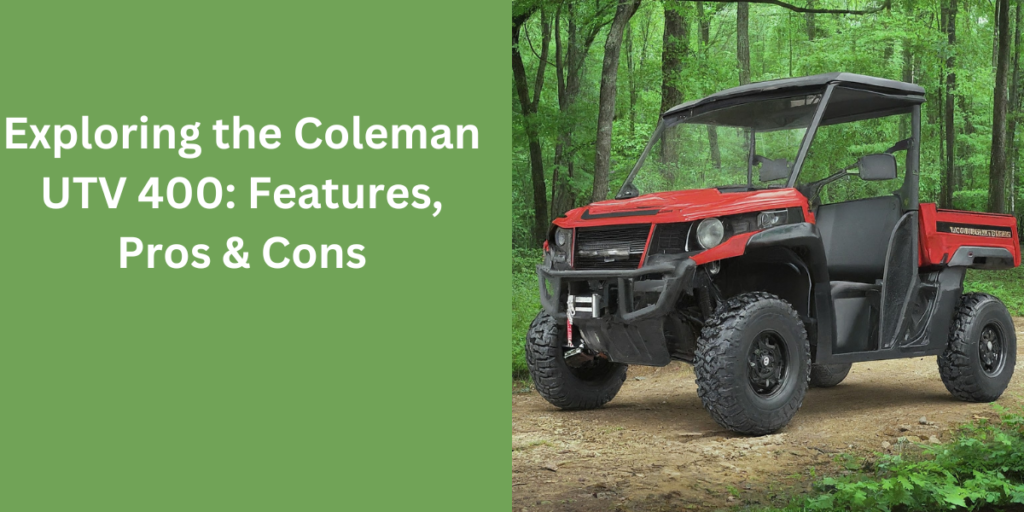Would you like some help to solve problems with your Kawasaki Concours 1000? You are at the right place.
The most common Kawasaki Concours 1000 problems are starting issues, engine overheating, brake overheating, brake fails, clutch issues, electrical problems, faulty spark plugs, and tire problems.
Here, we explore these problems in detail with their easy solutions.
Kawasaki Concours 1000 Problems and solutions
Now, we will explore the most common problems of Kawasaki Concours 1000 with their easy solutions. Also explore the Kawasaki Mule 2510 problems.
1. Starting Problems
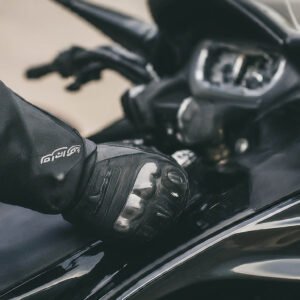
From my experience, these issues usually stem from the battery, starter motor, or fuel system. Knowing what to look for can save time and ensure you get back on the road quickly.
Battery Issues
One of the most common starting problems is a weak or dead battery. The Kawasaki Concours 1000, like most motorcycles, relies heavily on a well-charged battery. If you notice a slow crank or no crank, checking the battery voltage’s a good idea.
Ideally, it should read around 12.6 volts or higher when fully charged. Recharging or replacing the battery might be necessary if it’s below this.
Starter Motor Troubles
Another culprit could be the starter motor. If the battery is in good condition, the starter motor might be the issue, but the bike still won’t start.
Listen for a clicking sound when you press the start button. The starter solenoid might be engaging if you hear it, but the motor isn’t turning over. This could mean the starter motor needs to be inspected or replaced.
Fuel System Concerns
Fuel system problems can also prevent your bike from starting. Ensure your fuel lines are clogged-free and the fuel pump is working correctly.
Sometimes, the issue might be as simple as an empty fuel tank, so always check your fuel level first.
Additionally, if the bike has been sitting for a long time, the fuel might have gone wrong, requiring a fuel system flush.
2. Engine Overheating
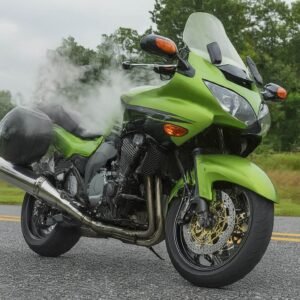
There are several reasons why your Kawasaki Concours 1000 might be overheating. One common cause is a malfunctioning thermostat. The thermostat regulates the flow of coolant through the engine. If it fails, the coolant flow is restricted, causing the engine temperature to rise.
Another potential cause is a clogged radiator. Over time, debris and dirt can accumulate in the radiator, reducing its ability to cool the engine effectively. Regular maintenance and cleaning are crucial to prevent this issue.
Additionally, a faulty water pump can lead to overheating. The water pump circulates coolant through the engine, and if it malfunctions, the coolant will not circulate properly, leading to increased engine temperatures. Also explore the problems of Kawasaki Mule 4010.
Solutions
Addressing the issue of engine overheating in your Kawasaki Concours 1000 can be straightforward if you follow these steps:
- Check the Thermostat: Regularly inspect and replace the thermostat if necessary. This small but crucial component ensures the proper coolant flow throughout your engine.
- Clean the Radiator: Make it a habit to clean your radiator periodically. Removing debris and ensuring it is free from blockages will enhance its efficiency in cooling the engine.
- Inspect the Water Pump: Regularly check the water pump for any signs of wear or malfunction. Replace it if needed to maintain proper coolant circulation.
3. Brake Overheating
Brake overheating in the Kawasaki Concours 1000 can result from several factors. Aggressive riding habits, such as frequent hard braking, can generate excessive heat.
Secondly, the brake pads might be worn out or of low quality, generating more heat than usual. Lastly, insufficient brake fluid or air in the brake lines can impede proper brake function, leading to overheating.
Solutions
To mitigate brake overheating in your Kawasaki Concours 1000, consider the following solutions:
- Change Your Riding Style: Avoid aggressive braking and use engine braking when possible. This will reduce the load on your brakes and help keep them cool.
- Upgrade Brake Components: Invest in high-quality brake pads and rotors. Sintered brake pads, for example, are known for superior heat resistance and performance.
- Regular Maintenance: Ensure your brake fluid is at the correct level and free of air bubbles. Regularly check and replace brake pads if they show signs of wear.
By following these steps you can easily get rid from the Kawasaki Concours 1000 brake overheating problems.
4. Brake Failures
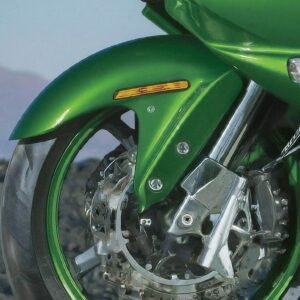
One prevalent problem with the Kawasaki Concours 1000 is brake fade. This occurs when the brakes overheat, leading to a loss of braking power. Brake fade can be particularly dangerous during long rides or in hilly terrains.
Another issue is brake fluid leakage, which can compromise the braking system’s efficiency. Additionally, worn-out brake pads and rotors can reduce braking performance and increase stopping distances.
Also explore the offroad vehicles
Effective Solutions
Addressing these brake issues involves regular maintenance and prompt action. To combat brake fade, ensure your brake fluid is high quality and replace it as the manufacturer recommends.
Switching to performance brake pads and rotors can also help manage heat better. For brake fluid leakage, inspect the brake lines and connections regularly and replace any damaged components.
Lastly, routinely check and replace worn-out brake pads and rotors to maintain optimal braking performance.
5. Kawasaki Concours 1000 Clutch Problems
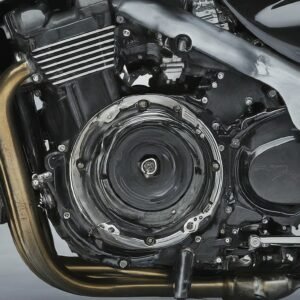
One of the most frequent issues with the Kawasaki Concours 1000 clutch is slipping. This occurs when the clutch doesn’t fully engage, leading to a loss of power transmission. Worn-out friction plates, contaminated oil, or a misadjusted clutch cable can cause this.
Another prevalent problem is a hard-to-pull clutch lever resulting from a poorly lubricated cable or a failing clutch master cylinder.
Additionally, some riders report issues with clutch drag, where the clutch doesn’t fully disengage, making it difficult to shift gears. Also explore the problems of Kawasaki Mule 3010.
Solutions
To resolve clutch slippage, start by inspecting the clutch plates. If they are worn or glazed, they must be replaced.
Ensure you’re using the recommended oil type and change it regularly to prevent contamination. Adjusting the clutch cable to the correct tension can also alleviate slippage issues.
If the clutch lever is difficult to pull, check the clutch cable for signs of wear or lack of lubrication.
Applying a suitable lubricant can significantly improve lever action. Should the issue persist, inspecting and potentially replacing the clutch master cylinder may be required.
For clutch drag, ensure that the clutch cable is correctly adjusted and that there is no air in the hydraulic lines. Bleeding the clutch system can often solve this problem.
6. Electric Issues
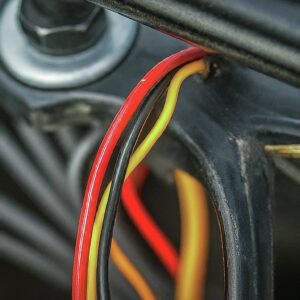
The Kawasaki Concours 1000 is a renowned sport-touring motorcycle, but it can experience electrical problems like any vehicle.
One common issue is a failing stator. The stator is crucial as it generates the electrical power needed to charge the battery and run the bike’s electrical systems.
Symptoms of a failing stator include a dead battery, dimming lights, and a stalling engine. If you suspect a stator issue, check for burnt wires or a short circuit, which can be diagnosed using a multimeter.
Resolving Battery Drain Problems
Battery drain is another frequent problem. If your battery consistently loses charge, it could be due to a parasitic draw. This occurs when an electrical component continues to draw power even when the bike is off.
To identify the source, disconnect the battery and use a multimeter to check for a voltage drop. Common culprits include faulty accessories or a malfunctioning relay. Replacing the defective component can resolve the issue and prevent further battery drain.
Addressing Faulty Wiring and Connectors
Faulty wiring and connectors can lead to intermittent electrical problems in the Kawasaki Concours 1000. Corroded connectors or frayed wires can disrupt the flow of electricity, causing erratic behavior in the bike’s systems.
Regularly inspect the wiring harness and connectors for wear and tear. Applying dielectric grease to the connectors can help prevent corrosion and ensure a reliable connection.
7. Kawasaki Concours 1000 Spark Plug Problems
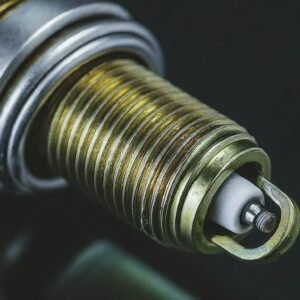
The spark plugs on a Kawasaki Concours 1000 can cause several problems. One common issue is fouling when the spark plug tip becomes coated with fuel, oil, or carbon deposits.
This can lead to misfires and reduced fuel efficiency. Another issue is wear and tear; the electrodes can erode over time, causing weak sparks.
Additionally, if the spark plugs are not installed correctly or are of poor quality, they can cause engine knocking or pre-ignition. Also explore the problems of Kawasaki Mule SX.
Solutions
Addressing spark plug issues in your Kawasaki Concours 1000 involves simple steps. First, regular maintenance is critical. Inspect your spark plugs every 5,000 to 10,000 miles and replace them if they show wear or fouling.
Use high-quality, manufacturer-recommended spark plugs to ensure optimal performance. Proper installation is also crucial; torque the spark plugs to the manufacturer’s specifications to avoid issues caused by loose or overly tight plugs.
8. Tire Issues
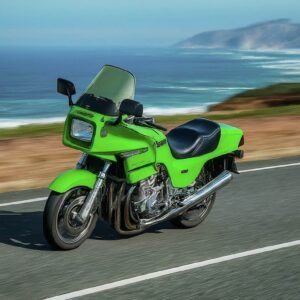
As a rider of the Kawasaki Concours 1000, you may have encountered some tire-related problems. One of the most frequent issues is uneven tire wear, which can decrease performance and safety.
Uneven wear often results from improper tire pressure or misalignment, and it’s crucial to address these issues promptly to ensure a smooth and safe ride.
Identifying and Solving Tire Pressure Problems
Maintaining the correct tire pressure is essential for optimal performance. The recommended tire pressure for the Kawasaki Concours 1000 is typically around 42 PSI for both front and rear tires.
Regularly checking the tire pressure can prevent premature wear and improve the bike’s handling.
If your tires are losing pressure quickly, inspect them for punctures or leaks and repair or replace them as needed.
Choosing the Right Tires
Another critical aspect of avoiding tire issues is selecting the appropriate tires for your Kawasaki Concours 1000. High-quality tires, like the Michelin Pilot Road 4 or Bridgestone T30 EVO, are well-suited for this model, offering excellent grip and durability.
When choosing tires to ensure the best performance and safety, consider factors such as riding conditions, load, and personal riding style.
Kawasaki Concours 1000 top speed
The Kawasaki Concours 1000, a sport-touring motorcycle, boasts a top speed of around 130 mph (209 km/h). With its 997cc, 4-cylinder engine, this bike offers a smooth yet powerful ride, perfect for long-distance touring. The balance of speed and comfort makes it an excellent choice for new riders seeking performance and reliability.
Conclusion:
By following this guide, you can easily eliminate the Kawasaki Concours 1000 problems, as I have provided the complete guide about it.
